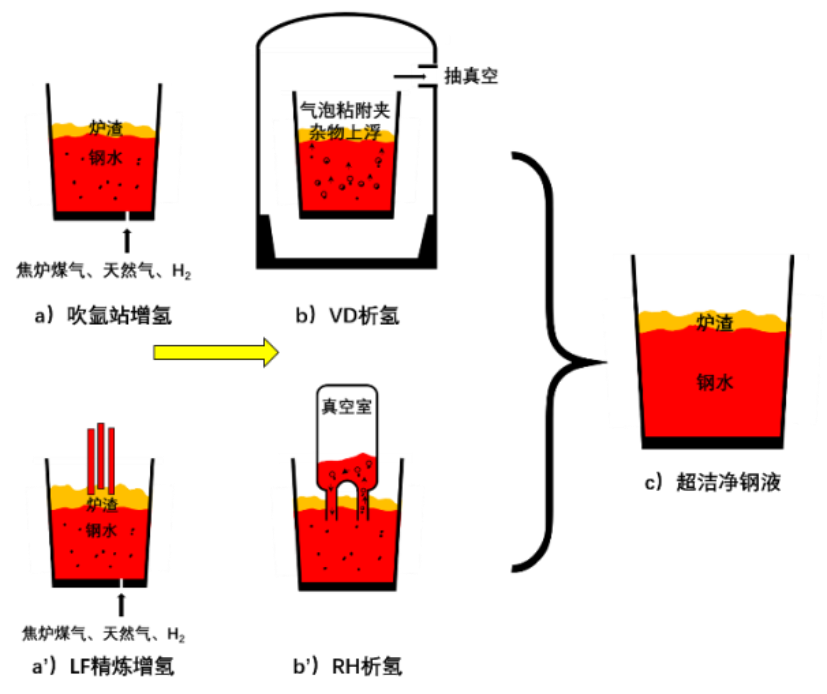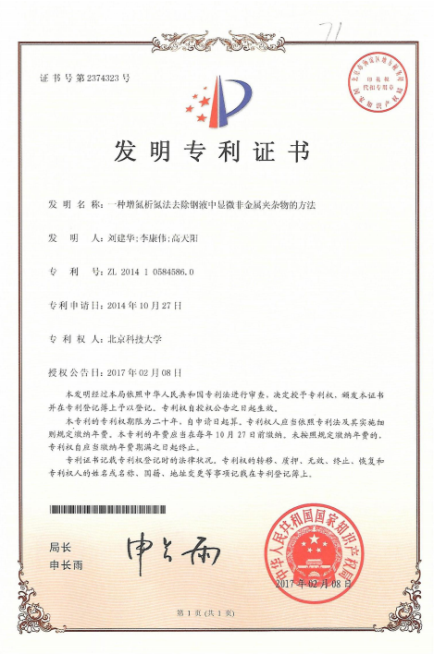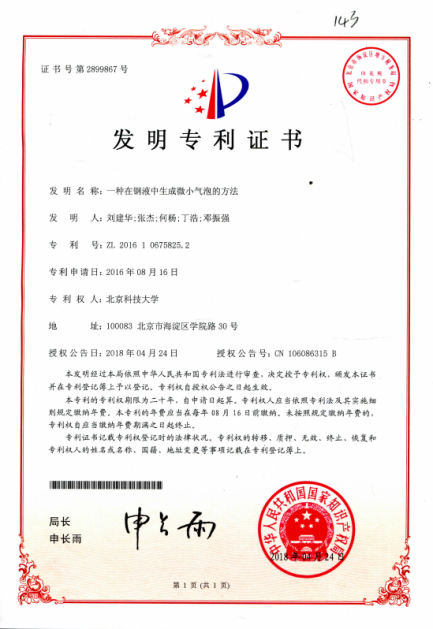Inclusions have a significant detrimental effect on the production and usability of steel, and inclusion control requirements are getting more and more rigorous. Existing technologies to remove inclusions, however, have reached their limits, and further improvements in inclusion control has run into a bottleneck.
Nitrogen or hydrogen are dissolved into molten steel by blowing them into the steel during argon blowing or LF refining. The molten steel is then subject to vacuum gassing by VD or RH to ensure the dissolved nitrogen and hydrogen is in a super-saturated state. Heterogeneous nucleation acts to form diffusive microbubbles in the steel that attach to the inclusions. The microbubbles carry the attached inclusions as well as capture more inclusions in their wake as they rise up, which significantly improves inclusion removal.
The results of a laboratory experiment using a 10 kg induction furnace indicates that with this method, the removal of inclusions in ball bearing steel can reach up to 79.2% and 81.6% oxygen, while that of inclusions in 82B steels can reach over 40% and up to 87.4% oxygen, with the total removal rate of oxygen exceeding 78%.
The industrial experiment carried out in the production of non-quenched and tempered steel in a steel mill in Shijiazhuang shows that, with the adoption of this new technique, the total oxygen volume in steel declined from 16 ppm to 11.5 ppm on average, and the amount of inclusions reduced by 52.8%. Inclusions over 10 m were completely removed.
At present, research on the related technology has been funded by the National Natural Science Foundation (NSFC), and has led to two invention patents.

Schematic diagram of technical proposal on in-depth removal of inclusions by hydrogen addition and gassing

Certificate of Authorization for Removal of Inclusions by Nitrogen Addition and Gassing

Certificate of Authorization for Removal of Inclusions by Hydrogen Addition and Gassing